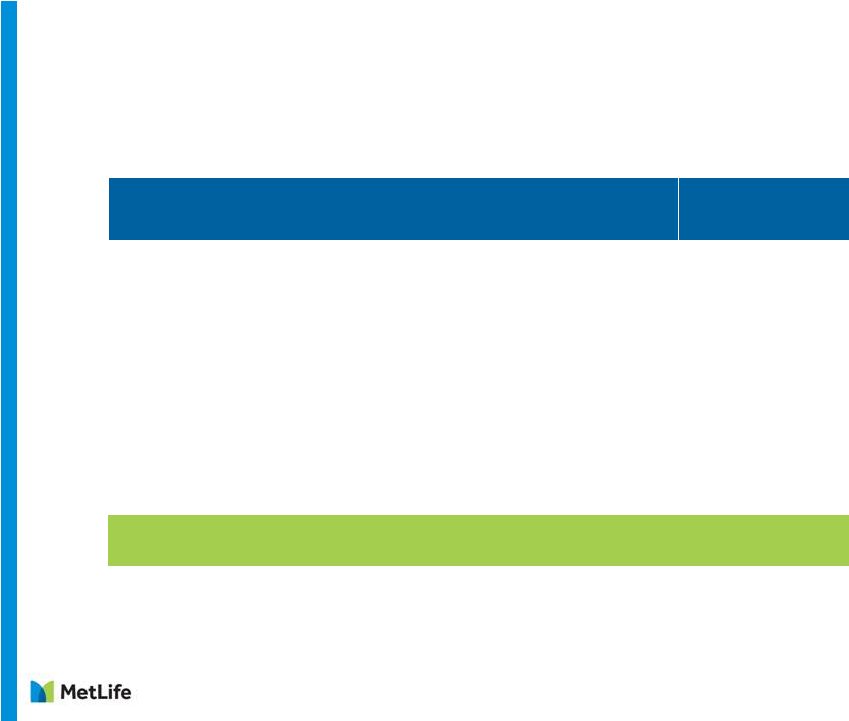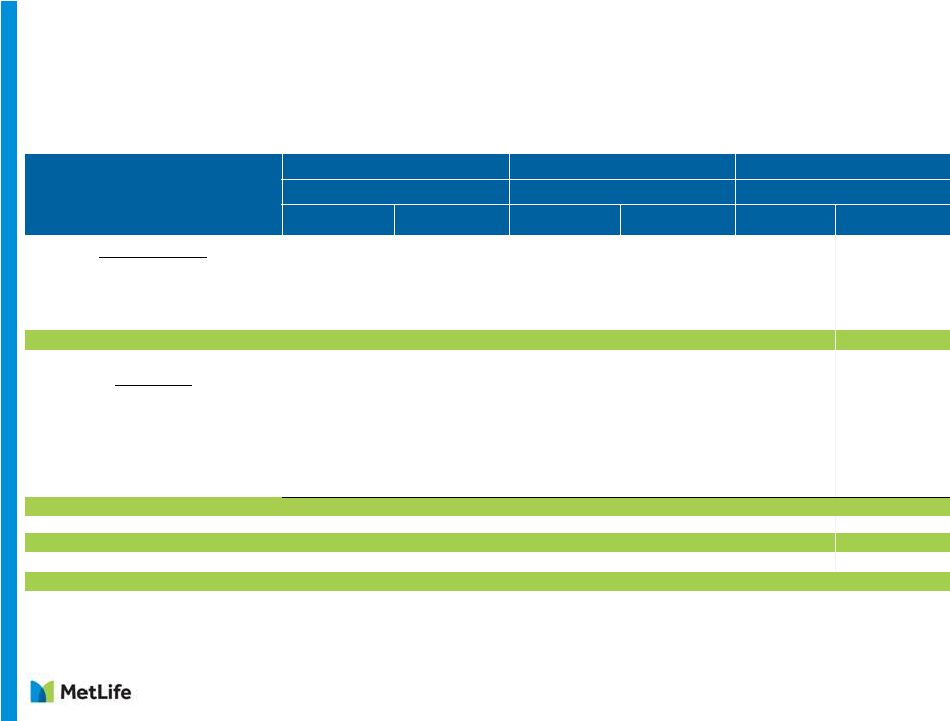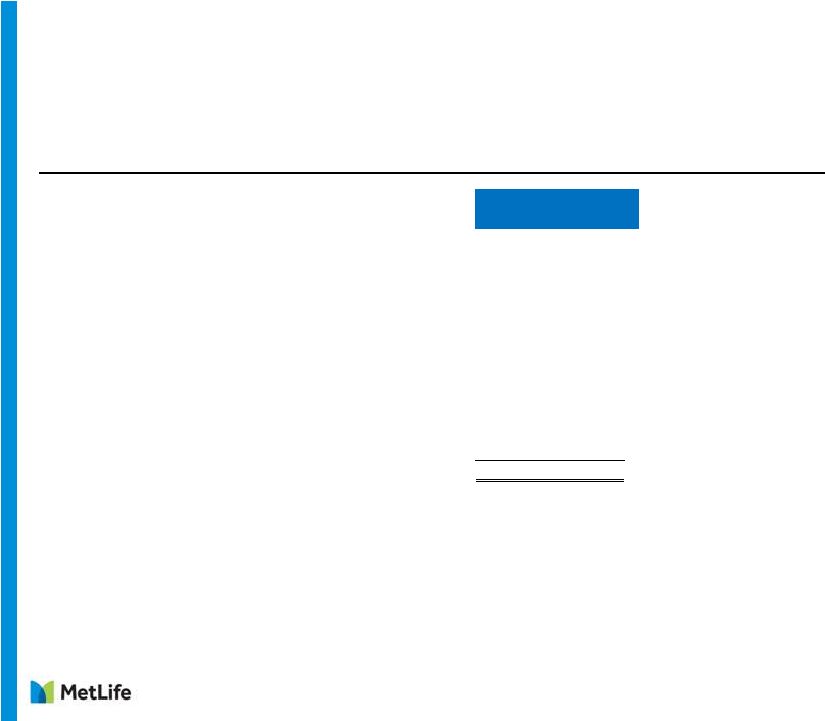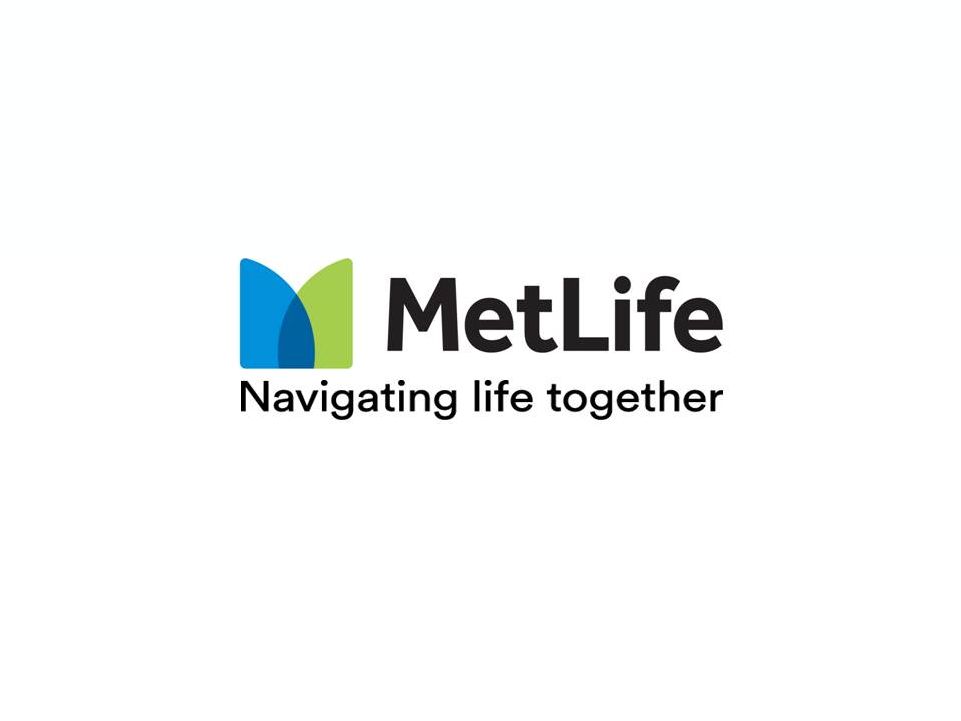Explanatory Note on Non-GAAP Financial Information (Continued) 7 • Policyholder benefits and claims and policyholder dividends excludes: (i) changes in the policyholder dividend obligation related to NIGL and NDGL, (ii) inflation- indexed benefit adjustments associated with contracts backed by inflation-indexed investments and amounts associated with periodic crediting rate adjustments based on the total return of a contractually referenced pool of assets and other pass through adjustments, (iii) benefits and hedging costs related to GMIBs (GMIB costs), and (iv) market value adjustments associated with surrenders or terminations of contracts (Market value adjustments); • Interest credited to policyholder account balances includes adjustments for earned income on derivatives and amortization of premium on derivatives that are hedges of policyholder account balances but do not qualify for hedge accounting treatment and excludes amounts related to net investment income earned on contractholder-directed unit-linked investments; • Amortization of DAC and value of business acquired (VOBA) excludes amounts related to: (i) NIGL and NDGL, (ii) GMIB fees and GMIB costs and (iii) Market value adjustments; • Amortization of negative VOBA excludes amounts related to Market value adjustments; • Interest expense on debt excludes certain amounts related to securitization entities that are VIEs consolidated under GAAP; and • Other operating expenses excludes costs related to: (i) noncontrolling interests, (ii) implementation of new insurance regulatory requirements, and (iii) acquisition, integration and other costs. Operating earnings also excludes the recognition of certain contingent assets and liabilities that could not be recognized at acquisition or adjusted for during the measurement period under GAAP business combination accounting guidance. The tax impact of the adjustments mentioned above are calculated net of the U.S. or foreign statutory tax rate, which could differ from the Company’s effective tax rate. Additionally, the provision for income tax (expense) benefit also includes the impact related to the timing of certain tax credits, as well as certain tax reforms. The following additional information is relevant to an understanding of MetLife’s performance results: • Asymmetrical and non-economic accounting refer to: (i) the portion of net derivative gains (losses) on embedded derivatives attributable to the inclusion of MetLife’s credit spreads in the liability valuations, (ii) hedging activity that generates net derivative gains (losses) and creates fluctuations in net income because hedge accounting cannot be achieved and the item being hedged does not a have an offsetting gain or loss recognized in earnings, (iii) inflation-indexed benefit adjustments associated with contracts backed by inflation-indexed investments and amounts associated with periodic crediting rate adjustments based on the total return of a contractually referenced pool of assets and other pass through adjustments, and (iv) impact of changes in foreign currency exchange rates on the re- measurement of foreign denominated unhedged funding agreements and financing transactions to the U.S. dollar and the re-measurement of certain liabilities from non-functional currencies to functional currencies. MetLife believes that excluding the impact of asymmetrical and non-economic accounting from total GAAP results enhances investor understanding of MetLife’s performance by disclosing how these accounting practices affect reported GAAP results. The following additional adjustments are made to expenses, in the line items indicated, in calculating operating expenses: | 







